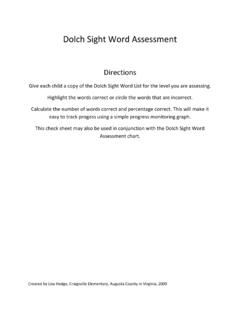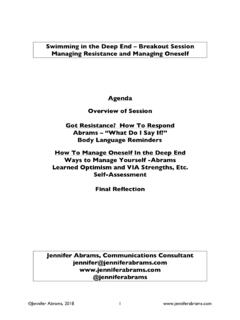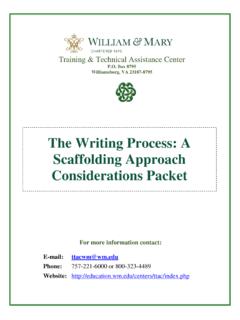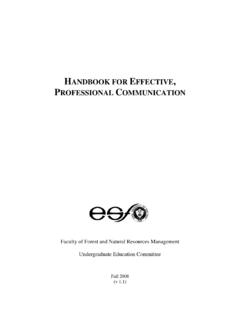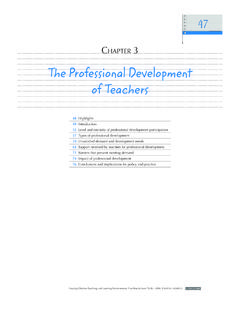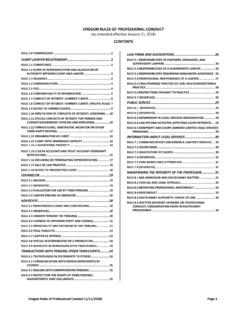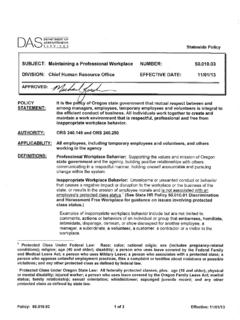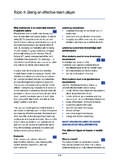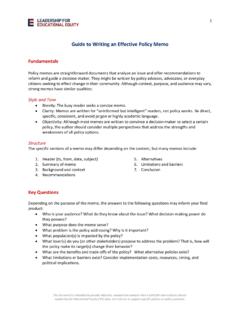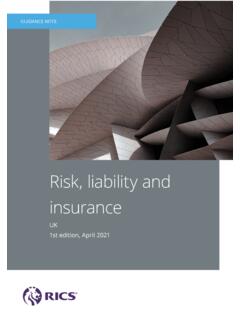Transcription of Designing Effective Professional Development
1 Training & Technical Assistance Center Box 8795 Williamsburg, VA 23187-8795 Designing Effective Professional Development Considerations Packet For more information contact: E-mail: Phone: 757-221-6000 or 800-323-4489 Website: Considerations: Designing Effective Professional Development T/TAC W&M 2003 2 Designing Effective Professional Development This Considerations Packet provides essential information to educators interested in improving Professional Development practices. Topics include standards for Designing Professional Development activities and programs that lead to improved learning for all students. An overview of basic information about the major models of Professional Development and their effectiveness is followed by specific strategies for determining if a school or school division is a learning organization.
2 Finally, key questions for identifying indicators of Effective Professional Development are also offered. The Changing View of Professional Development The field of education is constantly evolving and is rapidly expanding its knowledge base. New content knowledge and information about how students learn best is continually being discovered. In addition, the No Child Left Behind (NCLB) Act of 2001 is requiring schools and school divisions to close the achievement gap between traditionally low-performing student groups, such as economically disadvantaged students, minority students, limited-English proficient students, and students with disabilities, and their peers. If education professionals are to keep pace with the knowledge needed to ensure that all students will achieve at high levels, they must be continuous learners throughout their careers (Guskey, 2000).
3 The traditional view of Professional Development as a series of three or four isolated workshop days in the summer, or as scattered events throughout the school year, limits learning opportunities for educators and makes it difficult to stay up-to-date with emerging information. In addition to the shift from isolated and unrelated events to a more comprehensive and strategic approach to delivering Professional Development , Sparks and Hirsh (1997) have identified the following changes that are occurring related to Professional Development : Table 1 The Changing View of Staff Development FROM TO Individual Development Individual and organizational Development A focus on adult needs and satisfaction A focus on student needs and learning outcomes, as well as changes in teaching behaviors Training conducted away from the job as the primary delivery model Many forms of job-embedded learning opportunities Experts sharing knowledge and skills Study by teachers of the teaching and learning process A focus on general instructional skills A combination of generic and content-specific instructional skills Staff developers as trainers Staff developers who provide consultation, planning.
4 And facilitation in addition to training Staff Development provided by one or two departments Staff Development as a major function and responsibility of all administrators and teacher leaders Staff Development targeted primarily towards teachers Continuous improvement in the performance of all who impact student learning ( , school board members, school and central office administrators, instructional and support staff) (Adapted from Sparks & Hirsch, 1997) Considerations: Designing Effective Professional Development T/TAC W&M 2003 3 Furthermore, Joyce and Showers (2002) propose that sustained Professional Development that focuses on student achievement ( , curriculum-area topics, teaching strategies) will result in improved student outcomes.
5 Consequently, the first steps toward Designing Effective Professional Development are: (a) Adopting a broader view of what types of activities constitute Professional Development and (b) Making a commitment to focus the content of Professional Development activities on teaching and learning as it relates to improved student achievement. Standards for Professional Development The National Staff Development Council (NSDC) has developed a comprehensive set of standards to assist teachers and administrators in Designing Professional Development that improves the learning of all students (National Staff Development Council, 2001). The guiding questions that follow are adapted from the context, process, and content standards developed by NSDC. Yes answers to the questions in Table 2 indicate that the Professional Development program or activity is aligned with the 2001 NSDC Standards for Staff Development .
6 Table 2 Checklist for Alignment with NSDC Staff Development Standards Context Standards Yes No Learning Communities: Does the Professional Development activity or program organize adults into learning communities whose goals are aligned with those of the school and district? Leadership: Are there skillful school and district leaders who are guiding continuous instructional improvement? Resources: Are there resources to support adult learning and collaboration? Process Standards Data-Driven: Is disaggregated student data used to determine adult learning priorities, monitor progress, and help sustain continuous improvement?
7 Evaluation: Does the Professional Development activity or program prepare educators to apply research to decision making? Research-Based: Are multiple sources of information used to guide improvement and demonstrate the impact of the Professional Development activity or program? Design: Does the Professional Development activity or program use learning strategies appropriate to the intended goal? Learning: Does the Professional Development activity or program apply knowledge about human learning and change? Collaboration: Does the Professional Development activity or program provide educators with the knowledge and skills to collaborate? Content Standards Equity: Does the Professional Development activity or program prepare educators to understand and appreciate all students, create safe, orderly and supportive learning environments, and hold high expectations for their academic achievement?
8 Quality Teaching: Does the Professional Development activity or program deepen educators content knowledge, provide them with research-based instructional strategies to assist students in meeting rigorous academic standards, and prepare them to use various types of classroom assessments appropriately? Family Involvement: Does the Professional Development activity or program provide educators with the knowledge and skills to involve families and other stakeholders appropriately? Considerations: Designing Effective Professional Development T/TAC W&M 2003 4 Models of Professional Development Once the standards for Effective Professional Development have been reviewed, administrators and other educators who design Professional Development experiences for their school or division should consider all of the major models of Professional Development before determining the most appropriate approach.
9 The following models, adapted from Guskey (2000), are based upon the research of Sparks and Loucks-Horsley (1989) and Drago-Severson (1994) as cited in Guskey (2000). Training: This model of Professional Development is the one with which most educators are familiar. Training is typically presented in the form of a workshop, seminar, or some other form of large-group presentation. In order to ensure a meaningful presentation, presenters and those responsible for planning and facilitating the training should collaboratively develop the training objectives that will guide the content of the training. o Keys to Success: In order for training sessions to have a lasting impact, there must be additional follow up activities or sessions to allow for feedback and coaching as the newly learned skill is implemented and refined.
10 Such activities may involve peer observations or follow up sessions where participants meet again and assess the impact of the newly learned skill. Observation/Assessment: This model of Professional Development is based on the use of collegial observation and feedback to provide educators with information about a specific practice or skill. For teachers, such activities may involve peers observations of lesson design, instructional strategies, or classroom management. Administrators may choose to focus on the skills of master scheduling or instructional leadership. The model allows for both the observer and the person being observed to benefit from the observation and subsequent analysis of strengths and areas for possible improvement. o Keys to Success: For this model of Professional Development to be successful, it is important that the observation/assessment process be separate from the teacher evaluation process.




